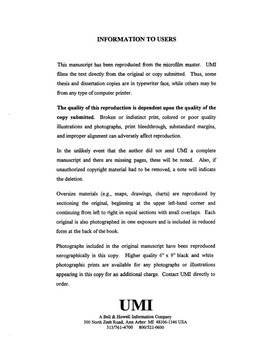| dc.contributor.advisor | Spath, Hans-Joachim, | en_US |
| dc.contributor.author | Alexander, J. C. | en_US |
| dc.date.accessioned | 2013-08-16T12:30:04Z | |
| dc.date.available | 2013-08-16T12:30:04Z | |
| dc.date.issued | 1998 | en_US |
| dc.identifier.uri | https://hdl.handle.net/11244/5646 | |
| dc.description.abstract | Research methods include energy analysis to determine the production efficiency of wheat production and evaluation of socio-economic variables (educational, entertainment, housing, insurance, and retirement expenses). Energy data are derived from a 1985 data set of northwestern Oklahoma dryland wheat farms and 1996 interviews with farmers. Socio-economic data are derived from actuarial, U.S. Census, Federal Bureau of Labor Statistics, and Oklahoma State Department of Education sources. Values are calculated for the hinterland and scaled down for a family of four. | en_US |
| dc.description.abstract | This dissertation develops a framework for defining the human carrying capacity of a small, dryland farmed wheat hinterland. The emphasis, developing a model, requires that a near monocultural town be examined. Recent literature reveals a growing interest in defining carrying capacity but research has been limited to either less developed countries or to alpine watersheds. The technique developed here will be the first constructed on an iso-plane, with physiography and land use being evenly distributed. The hinterland is 47,860 acres, the wheat production area of the Corn, Oklahoma, grain elevator. There are three types of assumptions. General assumptions define human carrying capacity as the number of occupants that the hinterland can support and the need for low-order service study area since it would have the least economic diversification. Agricultural assumptions evaluate grain production efficiency in light of fuel, labor, chemical, on-farm transportation, and machinery inputs versus the food energy output. Socio-economic assumptions assert that people desire a state of sufficiency such as financial well-being and the ability to pay debts and taxes. | en_US |
| dc.description.abstract | Results of analysis indicated that the hinterland can support the food needs of the population, for the output-input ratio is over five times. Socio-economic analysis revealed that based on assumed financial needs that 484 is the maximum population and average farm size of 395.53 acres. The output-input ratio with all needs considered is -2. Additional scenarios concerning the increase and decrease of current income from farming by five percent did not heavily affect the threshold of population. Future research should focus on more precise collection of data and development of frameworks to examine multi-crop, industrial, and service hinterlands. | en_US |
| dc.format.extent | xi, 164 leaves : | en_US |
| dc.subject | Population Economic aspects. | en_US |
| dc.subject | Population Environmental aspects. | en_US |
| dc.subject | Land use Oklahoma Corn. | en_US |
| dc.subject | Economics, Agricultural. | en_US |
| dc.subject | Geography. | en_US |
| dc.title | A framework for defining human carrying capacity of a dry-farmed wheat hinterland, based on Corn, Oklahoma. | en_US |
| dc.type | Thesis | en_US |
| dc.thesis.degree | Ph.D. | en_US |
| dc.thesis.degreeDiscipline | Department of Geography and Environmental Sustainability | en_US |
| dc.note | Major Professor: Hans-Joachim Spath. | en_US |
| dc.note | Source: Dissertation Abstracts International, Volume: 59-04, Section: A, page: 1289. | en_US |
| ou.identifier | (UMI)AAI9828799 | en_US |
| ou.group | College of Atmospheric & Geographic Sciences::Department of Geography and Environmental Sustainability | |
